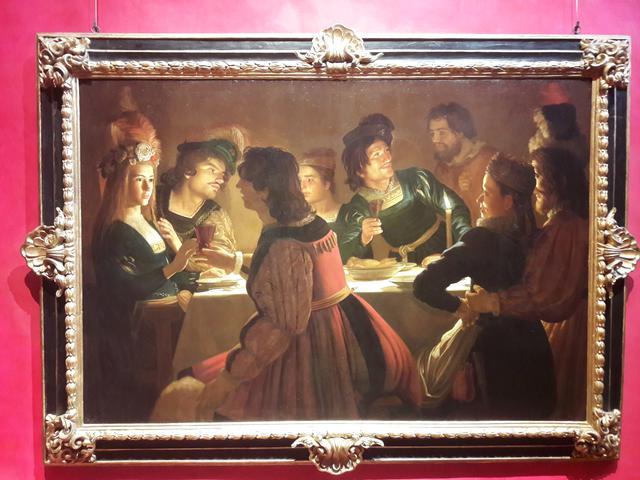The wedding dinner

Gerard van Honthorst was a Dutch Golden Age painter who became especially known for his depiction of artificially illuminated scenes, eventually receiving the nickname Gherardo delle Notti. Early in his career he visited Rome, where he had great success painting in a style influenced by Caravaggio. After his return to the Netherlands, he became a prominent portrait painter.
After completing his education, Honthorst went to Italy, where he was first engraved in 1616. He was one of the Utrecht artists who went to Rome around this time, and all of them must have been deeply influenced by the recent art they encountered there. They were named the Utrecht caravaggisti. The other three were Dirk van Baburen, Hendrick ter Bruggen and Jan van Bijlert. In Rome he stayed in the palace of Vincenzo Giustiniani, where he painted Christ before the high priest, now in the National Gallery in London. Giustiniani had a significant art collection, and Honthorst was especially influenced by contemporary artists, particularly Caravaggio, Bartolomeo Manfredi and the Carracci. He was especially known for his depiction of artificially illuminated scenes. Cardinal Scipione Borghese became another important patron, securing important commissions for him at San Silvestro Della Mariro, Montecompatri and at Santa Maria della Vittoria in Rome. He also worked for Cosimo II de' Medici, the Grand Duke of Tuscany.
Modern Italians often refer to Honthorst as "Gherardo delle notti" ("Gerrit of the Nights"). However, the nickname does not actually appear in any known Italian sources dating before Honthorst's death. Surviving Italian documents from before 1656 refer to the artist as "Gherardo Fiammingo" ("Gerrit the Fleming") or "Gherardo Hollandese" ("Gerrit the Dutchman"), emphasizing his strangeness rather than his characteristic skill in painting. night lighting. It was only in the 18th century that the nickname "Gherardo delle notti" came into widespread use
© Tourblink